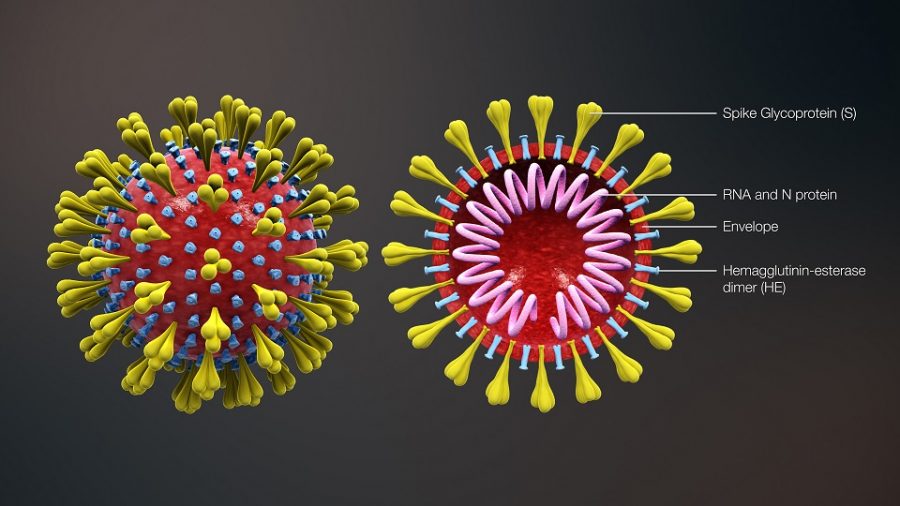The Coronavirus. Do I actually need to be worried?
We’ve all heard about the Coronavirus. Now whether you are taking this outbreak to be just good meme material, or you’re actually concerned, here’s everything you need to know.
Origin of Outbreak:
The first recorded cases were on January 7th in Wuhan, China. The disease then spread to neighboring Asian countries and the U.S. by January 21st. Australia and Canada joined the affected countries on January 26th, and by February 4th more than 29 countries have been affected. Go to the 3rd source listed below to see detailed progression maps. The vast majority of cases remain in China, which has around 66,500 confirmed cases. Most of the other affected counties have their case number below 100, and in a lot of them have their case number in the single digits. It should be noted that some of this data could be a little outdated, I am doing my best to keep it up to date.
What is the Coronavirus?:
It’s actually Coronavirus plural, and there are many strains to the virus that we’ve seen before, like the SARS virus outbreak that we saw in 2003. Most strains have cold-like symptoms, and can lead to more serious respiratory problems, such as pneumonia, or bronchitis. Sometimes strains of the virus found in animals can evolve and jump to humans. Health officials believe this may have been what happened in Wuhan, China, but the investigation is ongoing. Officials have said that it is extremely unlikely that an animal in the U.S. can transmit the virus. The virus is currently doubling every four days, which if you know anything about exponential growth, is a very scary figure.
Transmission:
The virus is likely spread through sneezes and coughs during person to person contact. Investigation is still ongoing.
Symptoms:
Symptoms of the NEW Coronavirus exhibit fever and respiratory issues around 14 days after exposure. The symptoms start so late because the incubation stage is still taking place during those weeks. People are dying from this virus when the respiratory issues turn into severe pneumonia. The majority of people who have died are over fifty, showing that the elderly are more at risk.
Treatment/Vaccines
Doctors’ current treatment is just treating the symptoms of the virus the best they can. There is currently no cure except letting the disease run its course. Most will recover. There is currently no vaccine, and it probably won’t be available to the public for months. The virus’s genetic sequence has been made public so that anyone who is willing to help develop a vaccine has an opportunity. Unfortunately even if a vaccine is made soon, its availability to the public will take a while. It has to be tested to see if it is safe and even effective on humans.
Do I need to be worried?:
The short answer, no. As long as you live in the U.S. the risk is minimal. The CDC says as long as you haven’t been in contact with people who have recently gone to Wuhan, you should be okay. You are extremely unlikely to have come in contact with the disease, as there have only been 15 confirmed cases in the U.S. The disease needs person to person contact to spread, and the U.S. has already taken preventative measures. All hospitals are being equipped to identify the disease, and treat symptoms if necessary. People are being told that if they are sick, STAY HOME. Although it is extremely unlikely that you have the disease, better safe than sorry. Plus even if you just have the flu you wouldn’t want to spread that either. To read information from a credible source, go to the second source below.
Quarantines:
Although this virus is of little risk to the U.S., it is devastating to China, and specifically Wuhan. Wuhan is on complete lockdown, no one in or out. The city is now subject to house inspections. If anyone is exhibiting symptoms they are rounded up and put into mass warehouse like quarantine centers. The people are scared and feel like they are being sacrificed for the betterment of China. See the last source below.
There are also 400 Americans quarantined on the Princess Diamond cruise ship. The whole ship of 3,000 passengers and crew have been stuck on the ship since it docked in Japan on February 3rd. There have been 285 confirmed cases on the ship. If all goes according to plan, the passengers quarantine should end on February 16th. All passengers have been cooped up in their rooms, and are only allowed an hour a day on deck for air. They have to remain six feet apart from each other when on the deck. All amenities and food are being provided, and most passengers report that although they are cramped, the experience is not agonizing. See the ABC News source listed below.
Works Cited
ABC News, ABC News Network, abcnews.go.com/US/us-evacuate-americans-quarantined-cruise-ship-due-coronavirus/story?id=69002244.
“Coronavirus: What It Is, What You Need to Know.” Coronavirus: What It Is, What You Need to Know – Mayo Clinic Health System, www.mayoclinichealthsystem.org/hometown-health/featured-topic/coronavirus-what-it-is-what-you-need-to-know.
Kommenda, Niko, et al. “How the Coronavirus Spread across China and the World – Visual Explainer.” The Guardian, Guardian News and Media, www.theguardian.com/world/ng-interactive/2020/feb/11/how-novel-coronavirus-spread-across-the-world-visual-explainer.
Qin, Amy, et al. “China Tightens Wuhan Lockdown in ‘Wartime’ Battle With Coronavirus.” The New York Times, The New York Times, 6 Feb. 2020, www.nytimes.com/2020/02/06/world/asia/coronavirus-china-wuhan-quarantine.html.

Anna enjoys writing thought provoking articles and is also one half of the "Anna Show". She participates in volleyball, track, robotics, jazz band, GTV,...

